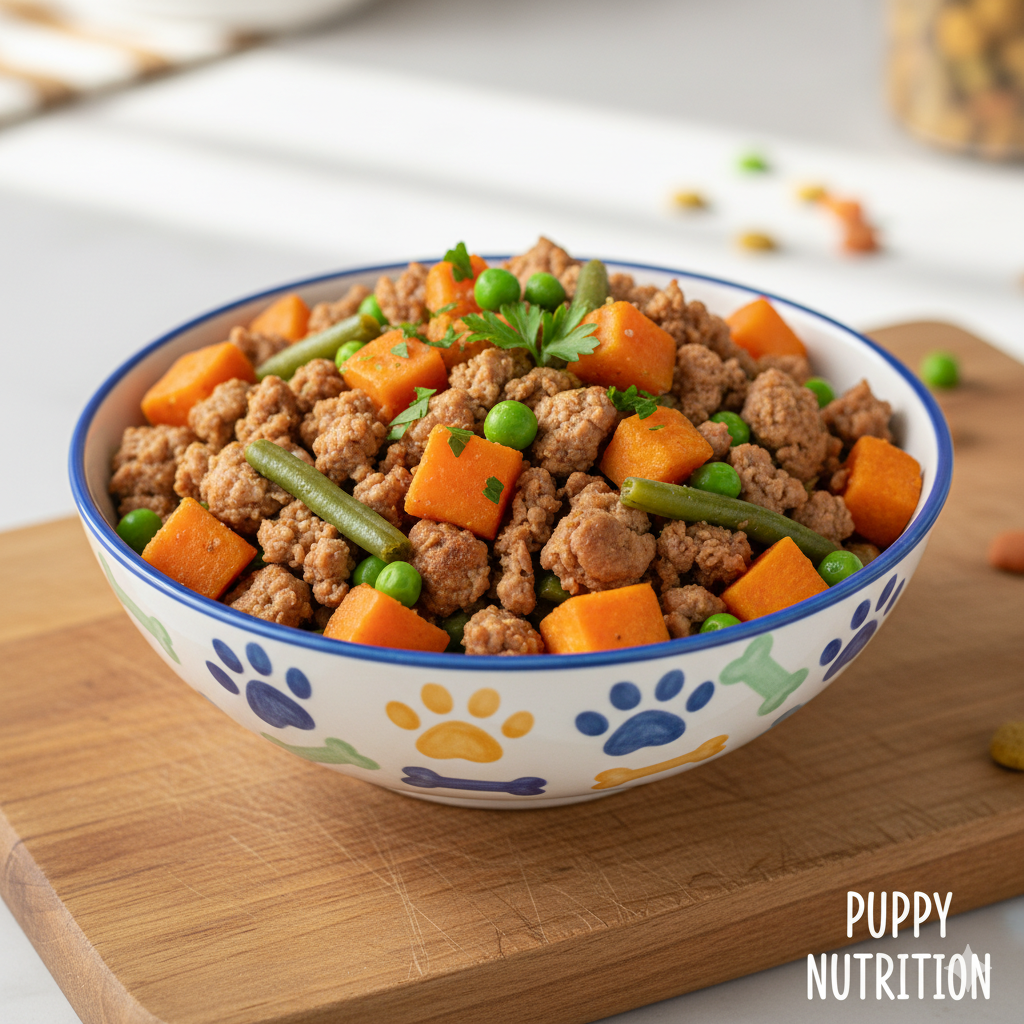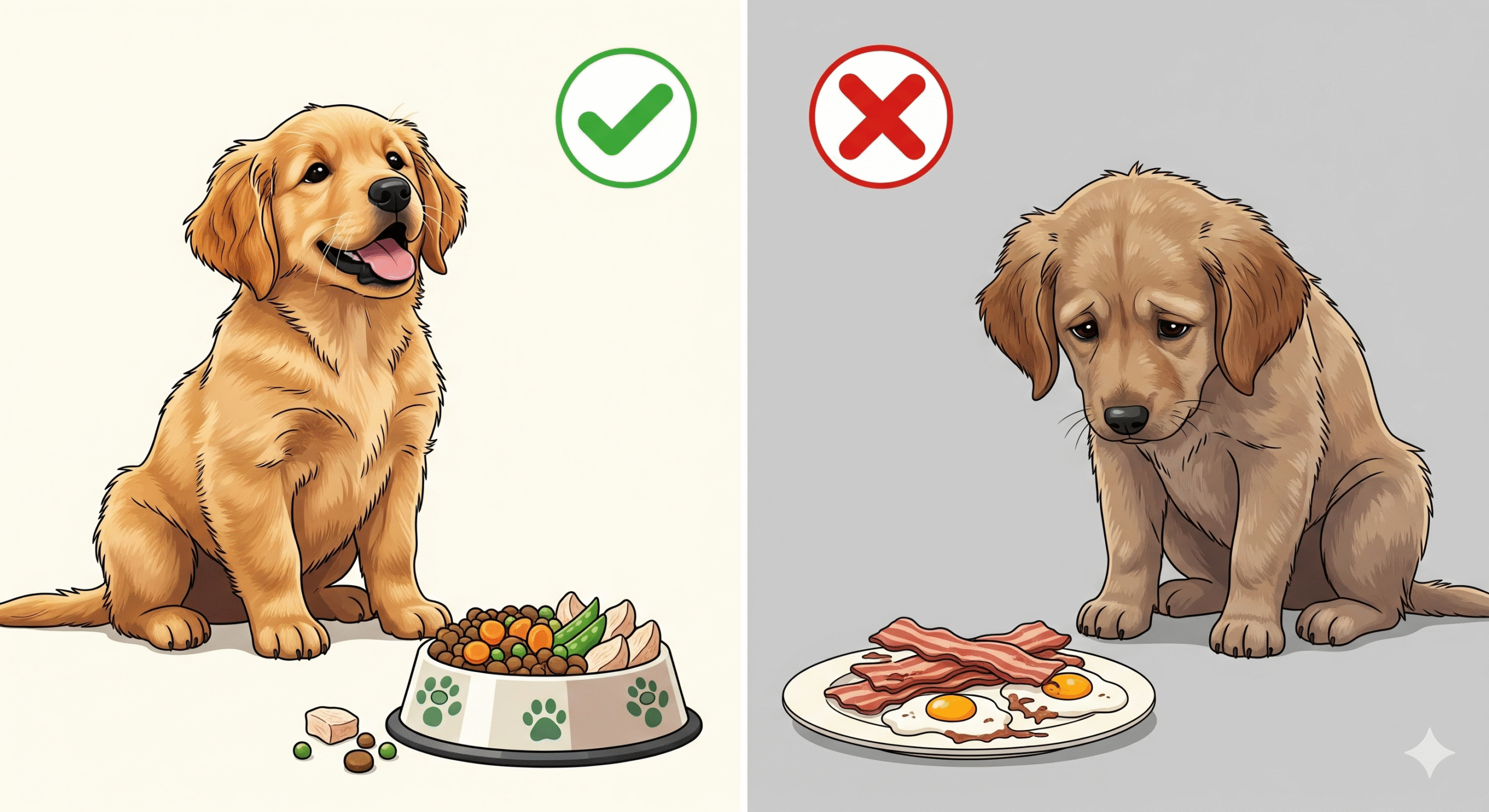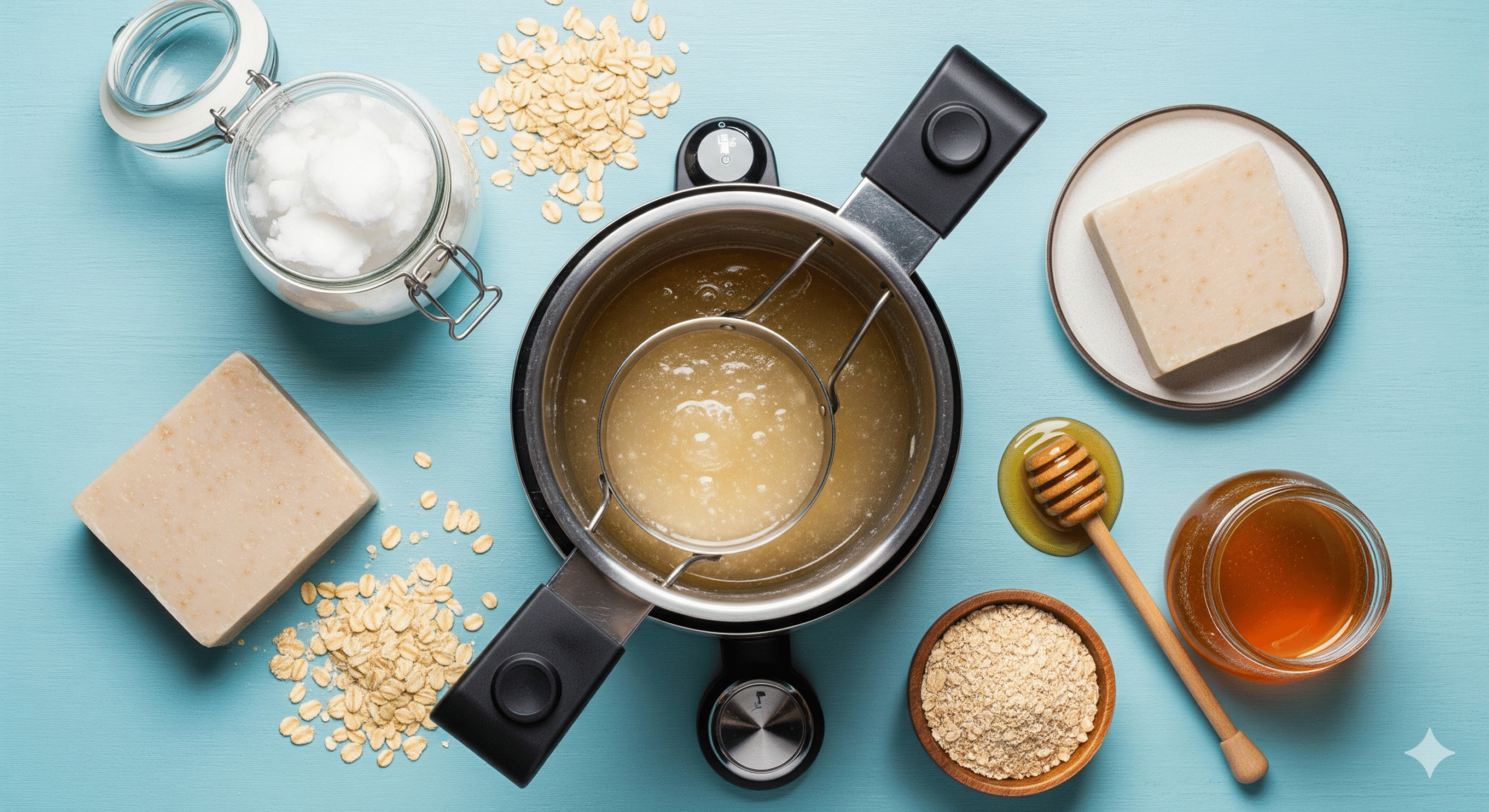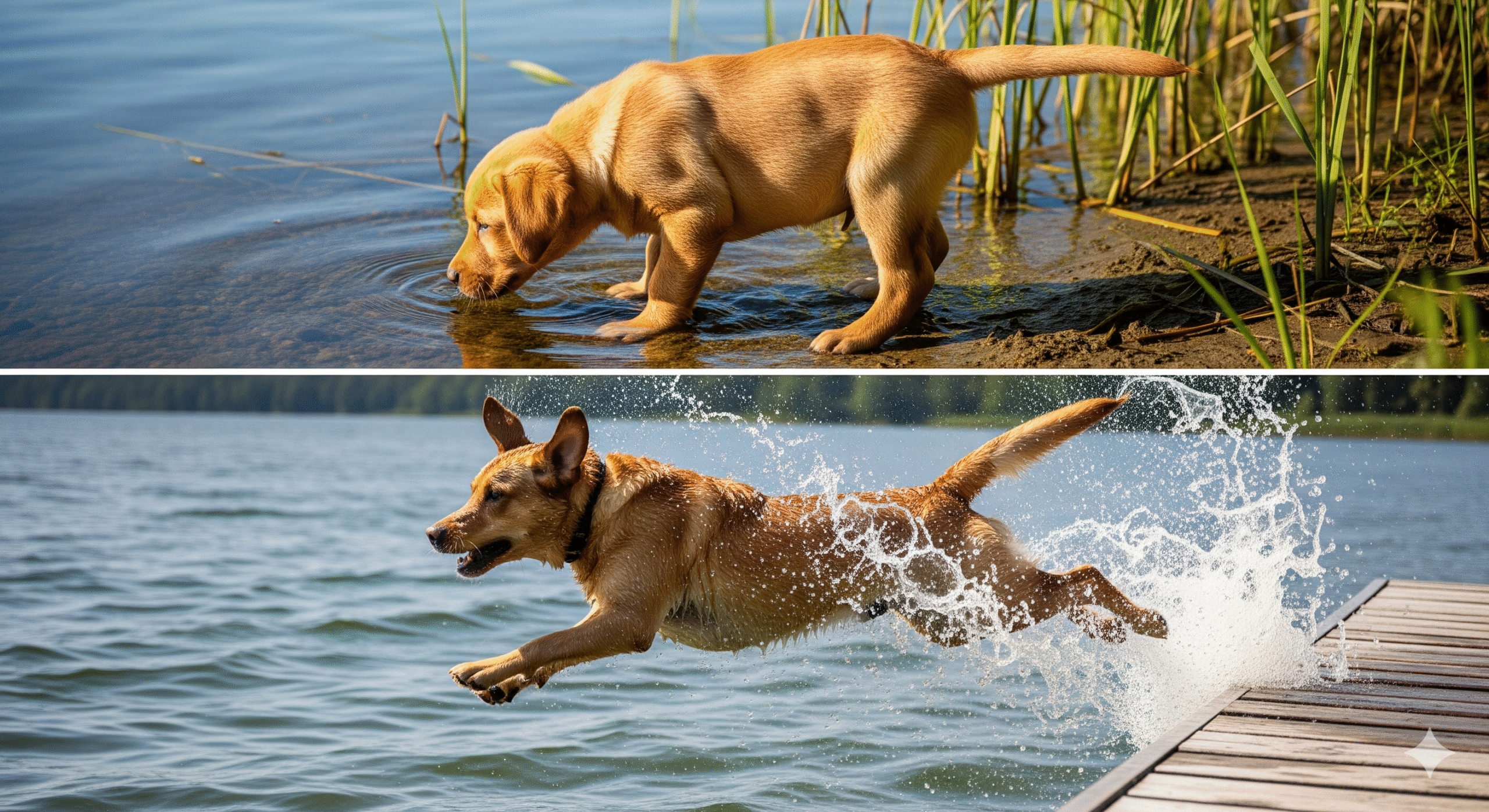The joy of welcoming a new puppy into your home is unmatched. As a loving pet parent, you want to provide the absolute best for your furry family member, and that starts with nutrition. While high-quality commercial kibble is a convenient and safe option, many owners are increasingly curious about homemade puppy food.
The idea of knowing exactly what goes into your pup’s bowl is incredibly appealing. However, puppies have very specific and stringent nutritional needs for their growing bones, muscles, and organs. Getting it wrong can have serious consequences. That’s why embarking on a homemade diet requires careful planning, research, and most importantly, veterinary guidance.
This comprehensive guide will walk you through the essentials of puppy nutrition, provide two vet-approved homemade puppy food recipes, and outline the critical steps to ensure your pup thrives on a DIY diet.
Why Consider Homemade Puppy Food? 🤔
Before diving into the recipes, it’s important to understand the potential benefits and significant challenges of making your own puppy food.
Potential Benefits:
- Ingredient Control: You know exactly what’s in your dog’s food—no mystery meats, questionable fillers, or artificial preservatives.
- Freshness & Quality: You can select high-quality, human-grade ingredients from your local butcher or farmer’s market.
- Tailored Nutrition: For puppies with specific allergies or sensitivities (e.g., to chicken or grains), you can create a diet that avoids these triggers.
- Palatability: Freshly cooked food is often incredibly enticing for picky eaters.
Significant Challenges & Risks:
- Nutritional Imbalance: This is the single biggest risk. Puppies require a precise balance of over 40 essential nutrients, including calcium, phosphorus, and specific vitamins. An imbalance can lead to severe developmental issues.
- Time-Consuming: Sourcing ingredients, preparing, cooking, and properly storing homemade puppy food is far more time-intensive than scooping kibble.
- Cost: Using high-quality ingredients can often be more expensive than buying a premium commercial puppy food.
- Consultation is Mandatory: This cannot be overstated. You must work with your veterinarian or a certified veterinary nutritionist to formulate a complete and balanced recipe for your specific puppy.
The Pillars of Puppy Nutrition: What Every Growing Pup Needs 🧱
Puppies are not just small dogs; they are growing organisms with unique needs. A proper homemade puppy food recipe must be built on these foundational pillars.
1. High-Quality Protein 🥩
Protein is the building block for growing muscles, tissues, and organs. Puppies need a diet that is approximately 22-32% protein (on a dry matter basis). Sources include:
- Lean meats like chicken breast, turkey, lean ground beef, and pork.
- Organ meats (in very small amounts), such as liver and kidney.
- Fish like salmon (rich in omega-3 fatty acids).
- Eggs.
2. Essential Fats 🥑
Fats provide concentrated energy and are crucial for brain development and a healthy coat. Look for sources rich in Omega-3 and Omega-6 fatty acids.
- Sources: Fish oil (a key supplement), flaxseed oil, and the natural fats in meat.
3. Calcium & Phosphorus 🦴
This is the most critical balance to get right. Too much or too little of either can cause devastating bone deformities and growth problems. The ideal calcium-to-phosphorus ratio for puppies is between 1.2:1 and 1.4:1.
- Never simply add calcium supplement powder without precise veterinary guidance based on your recipe.
4. Carbohydrates & Fiber 🌾
While not strictly essential, carbs provide energy and fiber aids in digestion.
- Sources: Cooked sweet potatoes, pumpkin, brown rice, quinoa, and green beans.
5. Vitamins & Minerals 💊
A wide array of vitamins (A, D, E, B-complex) and minerals (zinc, iron, selenium) are vital. This is where most homemade diets fail without proper supplementation.
- This is non-negotiable: A balanced puppy food recipe will require a custom-formulated vitamin and mineral supplement to meet all requirements.
Vet-Approved Homemade Puppy Food Recipes 🍳
Important Disclaimer: The following recipes are examples designed to be nutritionally complete only when the specified supplement is used exactly as directed. They are formulated to meet the nutritional levels established by the AAFCO Dog Food Nutrient Profiles for growth. You must consult your veterinarian before starting your puppy on this or any homemade diet.
Recipe 1: Simple Turkey & Sweet Potato Feast
This recipe is a great starter option, using easily digestible proteins and carbs.
Yield: Approximately 3-4 days of food for a medium-breed puppy (adjust for size)
Prep time: 20 minutes
Cook time: 30 minutes
Ingredients:
- 1 lb ground turkey (93% lean)
- 1 cup cooked brown rice
- 1 large sweet potato, cooked and mashed (about 1.5 cups)
- 1/2 cup peas (frozen or fresh)
- 1/2 cup carrots, finely chopped and steamed
- 2 tbsp olive oil or salmon oil
- 1 tsp Balance IT® Canine Supplement for Growth (This is the critical component. MUST be used.)
Instructions:
- In a large skillet, cook the ground turkey over medium heat until thoroughly browned and no longer pink. Drain any excess fat.
- While the turkey is cooking, prepare the brown rice according to package instructions and set aside.
- Peel and cube the sweet potato. Steam or boil until very soft, then mash.
- Lightly steam the carrots and peas until tender.
- In a large mixing bowl, combine the cooked turkey, brown rice, mashed sweet potato, peas, carrots, and olive/salmon oil.
- Allow the mixture to cool completely to room temperature.
- Crucial Step: Once cool, thoroughly mix in the precise amount of Balance IT® supplement. This ensures the vitamins are not destroyed by heat.
- Divide into appropriate portions for your puppy’s daily meals. Store the majority in an airtight container in the refrigerator for up to 4 days, or freeze portions for later use.
Recipe 2: Chicken & Veggie Medley
A classic recipe that most puppies find irresistible.
Yield: Approximately 3-4 days of food for a medium-breed puppy
Prep time: 20 minutes
Cook time: 25 minutes
Ingredients:
- 1.5 lbs boneless, skinless chicken breasts, cubed
- 1 cup quinoa, rinsed thoroughly
- 1 cup pumpkin puree (100% pure pumpkin, not pie filling)
- 1 cup green beans, chopped and steamed
- 1/4 cup chicken liver, finely chopped (optional, consult your vet)
- 2 tbsp coconut oil
- 1 tsp Balance IT® Canine Supplement for Growth
Instructions:
- Cook the quinoa in 2 cups of water or low-sodium chicken broth according to package instructions. Fluff with a fork and set aside.
- In a separate pot, poach or boil the cubed chicken breast until fully cooked through.
- If using, lightly sauté the chicken liver in a small pan until cooked through.
- Steam the green beans until tender.
- In a large bowl, combine the cooked chicken, cooked quinoa, pumpkin puree, green beans, and coconut oil.
- If using liver, finely chop it and mix it in (it’s potent, so a little goes a long way!).
- Allow the mixture to cool completely.
- Once cool, meticulously mix in the Balance IT® supplement.
- Portion and store as described above.
How to Transition to a Homemade Diet 🔄
A sudden switch in diet can upset your puppy’s stomach. Follow this gradual transition schedule over 7-10 days:
- Days 1-2: 75% old food / 25% new food
- Days 3-4: 50% old food / 50% new food
- Days 5-6: 25% old food / 75% new food
- Day 7+: 100% new homemade puppy food
Monitor your puppy’s stool closely during this time. If you see signs of diarrhea or vomiting, slow the transition down.
Monitoring Your Puppy’s Health 📊
Once on the new diet, keep a close eye on:
- Energy Levels: Your pup should be playful and energetic.
- Coat Quality: It should be soft, shiny, and not flaky.
- Stool: Should be firm and well-formed.
- Weight: Weigh your puppy weekly to ensure they are growing at a steady, healthy rate and not losing weight. Report any concerns to your vet immediately.
Final Thoughts: Partner With Your Vet 🩺
Embarking on the journey of making homemade puppy food is a significant commitment that stems from a place of deep love and care. When done correctly with expert guidance, it can be a wonderful way to nourish your puppy. When done incorrectly, it can be harmful.
Your veterinarian is your most valuable partner in this process. They can help you formulate a recipe, recommend the correct supplement dosage, and monitor your puppy’s health through bloodwork and regular check-ups to ensure your culinary efforts are truly benefiting your best friend.

When selecting a puppy food, look for an AAFCO statement ensuring it’s formulated for growth. The ingredients should feature a high-quality named animal protein as the first ingredient. In recent years, grain-free diets have become popular, but it’s important to understand that they are not necessarily healthier. The decision to feed a grain-free diet is a significant one that should be made with caution and based on the latest veterinary science, not marketing. For a deep dive into the potential risks and a veterinarian’s perspective on whether it’s a safe choice for growing puppies, read our detailed review: Grain-Free Puppy Food: Is It Safe? (Vet Review).






